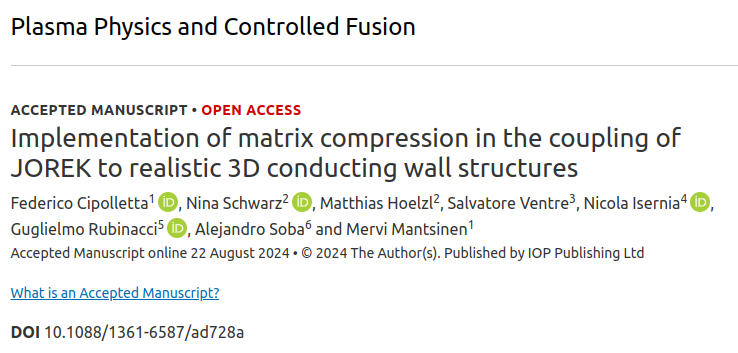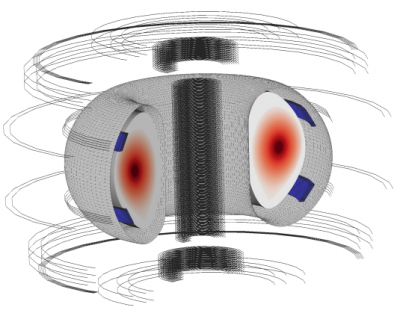
A method to control and optimize memory consumption has been implemented in the JOREK MHD code. It has been documented in the manuscript titled “Implementation of matrix compression in the coupling of JOREK to realistic 3D conducting wall structures” by Federico Cipolletta and collaborators, which was accepted for publication in the Plasma Physics and Controlled Fusion (PPCF) journal on 22/08/2024 and is available at this link.
The study considers the extension of JOREK including free-boundary and resistive walls, allowed via the couplings to either the STARWALL or CARIDDI codes. Those tools provide information on the interactions between the plasma and the conducting structures enveloping the walls of a nuclear fusion reactor within response matrices, which can become overwhelmingly big for models in high resolution. Therefore, compressing such matrices is needed to obtain accurate results with modern-day CPUs. The matrix compression of this novel implementation within the JOREK’s framework is pursued via the truncated Singular Value Decomposition (SVD) method. It is used in the first exploration of the compressibility of response matrices with the simulation of Tearing Mode (TM) instabilities and Vertical Displacement Events (VDE), focusing on its advantages and limitations.
|
|
|
The publication in the journal’s full formatting will appear on an open-access basis in the “Special Issue on High Performance Supercomputing (HPC) in Fusion Research 2023“, where some of the works presented at the 4th Fusion HPC Workshop are gathered. It is worth noting that, although the final objective of the study is the application to the geometry of big Tokamaks, like ITER or DEMO, this first part is focused on a proof-of-concept, based on the geometry of ASDEX Upgrade (AUG), to understand the feasibility of compression of the matrices mentioned above. Interestingly, despite the simplicity of the method implemented, one satisfying rate of compression can be effectively reached in the TM scenario. Nevertheless, the related work is still ongoing in studying alternative compression methods to improve the results for VDE cases, where the compression via truncated SVD appears inefficient.
This work comes from one of the activities at the EUROfusion Advanced Computing Hub (ACH) at the Barcelona Supercomputing Center (BSC). It represents an additional example of success in the search for synergies between Technology and Theoretical Research in Nuclear Fusion, where the HPC is gaining more and more importance, as time goes by.


